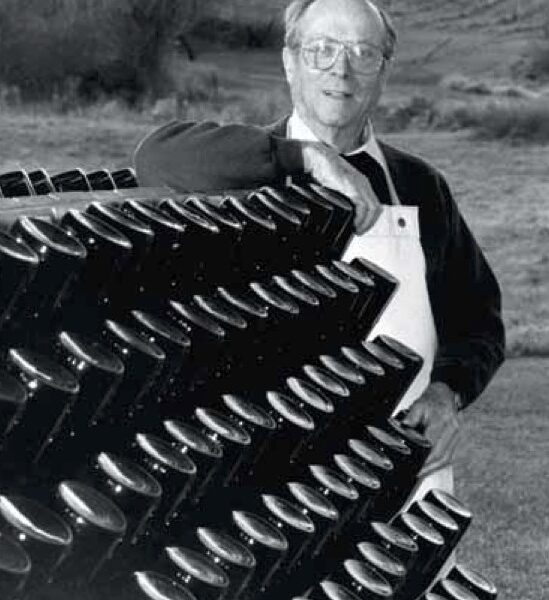
“My husband died, but he’s not dead,” says Phyllis Feder as she leads me into the tasting room, its windows overlooking a portion of the vineyard. She’s got a point.
Ben Feder passed away in September 2009 at age 86, but for oenophiles who love a locavore pour, his legacy lives on. The New York Times credited his groundbreaking Clinton Vineyard as “instrumental” in establishing the Hudson Valley as “a serious winemaking region.”
Back in 1969, when he bought the Dutchess County property, he had no interest in making wine. The Manhattan-based graphic designer and real-estate developer simply sought a weekend retreat; his rural foray began with a herd of wandering cows he’d unwittingly inherited as payment for outstanding debts.
The tasting room, which retains the charm of its original incarnation as a barn, is adorned with framed certificates, official letters of recognition and a display of vintage bottles of seyval blanc. Against rows of bottles with medals around their necks, Phyllis laughs as she recalls how Ben found the cows on their backs.
“They had eaten fermented apples and fallen drunk, mooing with their feet in the air.” When called upon by a neighbor to retrieve the wandering beasts, Ben said flatly, “I am a boy from the Bronx, I don’t know how to get cows.” The cows were soon gone to make room for other exploits.
While Ben’s urban roots and artistic inclinations proved incompatible with bovine, he envisioned a vineyard. While studying at Parsons on the G.I. Bill, he’d spent time in Italy and France, emerging as a Francophile and a gourmand with a well-developed palate. He visited vineyards, read wine books and although he never formally studied viticulture, soon committed to the idea of a vineyard in Clinton Corners.
In 1976-the year Ben opened Clinton Vineyards-there were only 19 wineries in all of New York State, and none on the Hudson’s east bank. “Ben was the first to take the risk,” says David Bova, general manager of Millbrook Vineyards and Winery. “He learned in France that he could grow grapes on hillsides. Ben was a pioneer.”
Ben joined forces with Jon Dyson of Millbrook Vineyards and Winery and Mark Miller, who founded Benmarl, to persuade Governor Carey to pass legislation that would allow small wineries to bypass wholesalers and sell directly to consumers, restaurants and liquor stores.
“Ben was a great collaborator,” says Jim Trezise, the president of the New York Wine & Grape Foundation. “He was a strong supporter of the Farm Winery Act of 1976, which laid the groundwork for small winery growth in New York.” Without the middleman, small wineries were on better financial footing. Today the state boasts 255 wineries, 37 in the Hudson Valley.
After consulting with Cornell University’s wine and grape authorities, Ben instead listened to his gut and put in only seyval blanc-a light-skinned French hybrid suited to cool climates. Where cattle once roamed, Ben planted, trained and trellised 15 acres of grapes.
Clinton Vineyards’ first vintage, released in 1978, garnered numerous awards, and the Times’s Frank Prial praised it, declaring it the best in the region. Soon cars lined the road, as readers sought their share of the 300 cases. “Ben had to limit sales,” recalls Phyllis. “He was afraid he was going to run out!”
In 1980, Ben’s interest in sparkling wine drove him to the source-Champagne, France, where he insisted that Bollinger’s cellar master Christian Bissot teach him everything. Clinton Vineyards released its first sparkling wine four years later and today the winery is well known for its méthode champenoise bottles, including one with peach juice and one with wild black raspberries.
Fruit wine now comprises a majority of Clinton Vineyards’ entire production, but the Feders stumbled upon it when a local farmer offered them his surplus-1,000 pounds of raspberries, all in pint-sized boxes. Soon they began experimenting with wine from the juice of blackberries, strawberries, rhubarb and eventually currants.
At a blind tasting, Clinton’s cassis beat bottles from Canada and France, and, in 2004, it won a gold medal at the Los Angeles County Fair, declaring it the best cassis produced in the States. On the nose, the notes are surprisingly earthy, dirty and rustic. The fruit is wild and fresh, fully integrated and complex-all traits that make it the perfect spirit to raise in toast to Ben Feder.
Photo credit: Mark Antman



